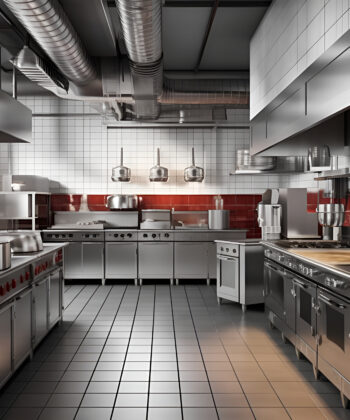
Are you tired of parking your car on the street, exposing it to harsh weather conditions and potential theft? If so, it may be time to invest in a new garage. Whether you need extra storage space or a workshop, a garage can greatly enhance the functionality and value of your home.
And with at least 66% of households in the US having a garage, plenty of inspiration surrounds you. But selecting the best garage design isn’t as simple as choosing between a detached or attached garage. There are countless factors to consider, such as size, materials, layout, and style.
Proper planning and research are crucial to ensure your garage meets your needs and complements the aesthetics of your property, and we’re here to help you with this guide. Follow along as we explore the process of choosing the best garage design for your specific needs and preferences.
The Basics of Building a Garage
When building a garage, there are a few things you should know before getting started. First and foremost, ensure you have all the necessary permits and zoning codes in place. Failure to adhere to these regulations can result in:
- Costly fines
- Delays
- Legal trouble
Once you have the necessary paperwork, you should start considering the design and layout of your garage. Think about the size and style of the garage, as well as any additional features you might want, like windows, a loft, or a workspace. If you’re unsure where to start, keep scrolling!
You’ll also want to carefully consider the materials you’ll be using, as these will impact both the durability and cost of your project. And don’t forget about the foundation. Be sure to pour a frost-protected foundation with adequate drainage to ensure water doesn’t seep in and cause damage.
By keeping these basics and details in mind, you can build a sturdy and functional garage that will serve you for years to come.
Hiring Contractors
Hiring contractors is a common practice for homeowners needing work on their properties. However, deciding whether or not to hire a contractor can be a tough decision.
On the one hand, hiring a contractor has its benefits. Contractors have experience and expertise in their field, which can ensure that the job is done correctly and efficiently. Additionally, contractors often have access to specialized tools and equipment that may be difficult to obtain otherwise. This can save time and money in the long run.
On the other hand, contractors typically charge a fee for their services, which can add up quickly. Additionally, it can be difficult to find a reliable contractor who will deliver quality work within the specified timeframe.
Ultimately, whether hiring a contractor is a good idea depends on your specific situation. Conducting extensive research before hiring a contractor is essential to ensure your project is in the right hands.
Types of Garages
Are you ready to start building your garage? Great, but first, you’ll need to decide how you’re going to use your garage. There are, after all, different types of garages and various uses for each.
Single vs. Double
A single garage is designed to fit one vehicle, while a double garage can accommodate two or more vehicles. Double garages are usually larger and may have two separate doors or a single larger door. The size difference between single and double garages is clear, with double garages being considerably larger than single ones.
Double garages are commonly used for family vehicles, storage space, and workshop areas. Due to their size, double garages provide more room for storage and allow homeowners to have extra space to work on their hobbies or projects.
Which is right for you? It depends on your interests and garage building budget. Those with fewer vehicles may prefer a single garage, while growing families or activity enthusiasts may need the additional space provided by a double garage.
Attached vs. Detached
Additionally, you’ll need to consider whether you’re going to attach your new garage to your house or build it as a separate structure.
Attached garages have several advantages, such as providing easy access to the house and additional living space above the garage. However, they can also be a security risk if not properly secured, and their location can limit the amount of outdoor space.
Detached garages, on the other hand, offer added privacy and versatility regarding space usage. They can be placed in different locations on the property and provide additional storage or a workspace.
To make the right decision before you build a garage, consider factors like space availability, convenience, and security.
Consider How You’ll Use the Garage
Before embarking on any garage organization or renovation project, it’s essential to consider how you’ll use the space. We briefly mentioned this above, but now that you’re close to buying materials and starting to build, it’s worth taking time to ensure you have a plan.
Will it be used solely for parking vehicles, as a workshop, storage space, or even a home gym? The answer to this question will determine the layout, storage solutions, and materials needed to maximize the use of the garage.
Another important factor to consider is the size of your garage. If you have a small garage and plan to use it as a workshop, installing a workbench and adequate storage solutions will help optimize the space. On the other hand, for a larger garage, you can create designated zones for parking, storage, and workspaces.
It’s also crucial to consider the climate in your area and how it may impact the items stored in your garage. For example, in colder climates you might experience in cities like Vancouver, it’s important to ensure your vehicles and any items stored in the garage are protected from frost or freezing temperatures.
This might seem like a headache of a step, sure. However, by considering how you’ll use the garage, its size, and the local climate, you can plan and optimize your garage space to meet your specific needs and get the most value from this area of your home.
Consider New Garage Flooring
Your garage floor takes a lot of abuse, from oil spills to tire tracks. If you’re looking for a durable solution that will look great for years to come, it’s important to take time to really consider the type of garage flooring you’ll use when planning a garage build.
Here’s a look at the two most popular garage flooring options (epoxy and polyaspartic coatings) and why polyaspartic is the best choice.
Epoxy Floor Coatings
Epoxy flooring is a popular option for homeowners looking to upgrade their bland, old concrete garage floors. Epoxy is a thermosetting resin mixed with a hardener to create a durable coating.
However, while epoxy is a good option for those on a budget, it does have some drawbacks. One issue with epoxy flooring is that it can turn yellow over time, especially if exposed to sunlight. It’s also prone to chipping and peeling if the surface isn’t properly prepped before application.
Additionally, epoxy can take up to a week to fully cure, meaning you have to stay off the floor for an extended period.
Polyaspartic Floor Coatings
Polyaspartic floor coatings are a newer technology that offers several advantages over epoxy. The coating is a type of polyurea that is much more flexible than epoxy, making them more resistant to cracking and chipping. They also have a shorter curing time, meaning you can use your garage sooner.
Another benefit is that polyaspartic floor coatings are highly resistant to UV rays so they won’t yellow or fade over time. This is particularly important if your garage receives a lot of sunlight. They are also much more resistant to chemicals and staining than epoxy.
Garage Design Ideas
Now comes the fun part: designing your garage’s layout! Whether you’re interested in something scaled-back and serious or vibrant and fun, here are various garage design ideas that will help you maximize storage and enhance the functionality of your garage.
Storage System
One of the essential aspects of garage design is storage. With proper storage, you can keep your tools, equipment, and supplies organized, ensuring that everything is easily accessible. Consider installing storage cabinets, pegboards, wall shelves, and overhead storage racks for the most efficient use of your garage’s space.
Lighting
Proper lighting in your garage is vital, especially during the winter months when there is less natural light available. Consider installing overhead lights, task lights, or even motion-activated lights to improve visibility and make the garage more functional.
Workstation
Setting up a workstation is an excellent idea if you plan on using your garage for woodworking or other DIY projects. A sturdy workbench is a great start, and you can consider adding pegboards or tool organizers to keep your workspace organized.
Charging Stations
With the growing number of electronic devices, having a charging station in your garage can be convenient. You can install an outlet strip that allows you to charge multiple gadgets at once.
Personal Style
Adding decor and personal touches to your garage can make it feel like an extension of your home. Paint the walls with your favorite colors, hang artwork, or bring in your favorite deep fryers for a foodie-focused space and outdoor kitchen.
How to Decorate a Garage
You’re almost done building your garage. Whew. Now it’s time to decorate it. And while garages are often viewed as a space for storing cars, tools, and other equipment, they can also be converted into comfortable living spaces, cozy dens, and workspaces with the right decoration.
Organize the Space
Before starting with the decoration, ensure that your garage is cleaned and organized. Sorting through the contents of your garage, donating unwanted items, or recycling those that are damaged is a sensible first step. Take the time to sweep and mop the floors or pressure wash them to remove all the dirt and grime. This is especially important after a big build.
Add Some Color
An excellent way to liven up the garage space is by incorporating pops of colors. This could be done by painting one of the walls in a bright, vibrant hue or installing colorful tiles on the floor. An all-white garage can make it feel drab and unwelcoming, but adding a soothing color helps make the space feel inviting and comfortable.
Install Appropriate Lighting
Good lighting is essential in any living space; the garage is no exception. Investing in high-quality overhead, task, and accent lighting fixtures will create an enjoyable and comfortable environment. Natural light is desirable, so consider installing large windows or skylights for optimal lighting.
Utilize Vertical Space
Remember to use the vertical space to your advantage when decorating a garage. Hanging up storage units or installing shelving units on the walls can allow additional storage space while keeping the floor clear of clutter.
Make It Cozy
Finally, make your garage feel cozy by incorporating comfortable seating, area rugs, and artwork. Adding some comfortable couches or chairs makes it a suitable space to relax with friends’ or kids’ homework nooks. Area rugs add warmth and color, and artwork adds a personal touch.
Enjoy a Break From Building
Building a garage is tough work, regardless of what kind of garage design you choose. Give yourself a break from building and unwind at a local restaurant.
Not sure where to eat? We make it easy for you. Using Restaurant Web Experts, you can find restaurants, browse menus, and make a reservation all in one spot. Click here to get started!



